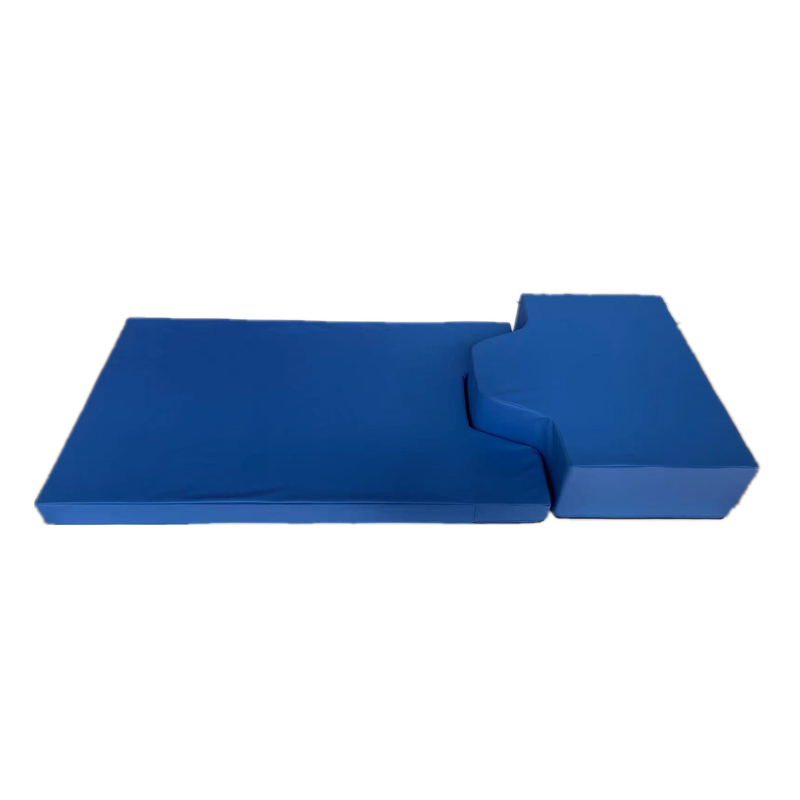A pressure mattress is designed to increase comfort for an individual suffering from pressure sores. The mattress provides high levels of support for the head and body to relieve any mounting stress on pressure points. Pressure relief mattresses differ from a regular mattress as they have carefully designed air pockets, specifically designed to place less pressure on the main pressure points in the body.
There are three main types of pressure relieving mattresses:
STATIC/FOAM MATTRESSES (REACTIVE SURFACE)
Static mattresses are comprised of single or multiple pressure relieving foam/s. Their surface remains static and relieves pressure overtime by evenly distributing an individual’s weight over a large surface at a continuous low pressure. It responds to an individual’s body shape, heat and movement. Additional pressure relief is also provided by castellations and shaped surfaces as well as the air pockets within the foam layer/s.
Static mattresses are designed more for the prevention of pressure ulcers rather than the treatment, so they can only relieve so much pressure. Particularly for immobile users it is important they are repositioned by their carer regularly; if an individual is not moved regularly then sores can develop. Therefore, static mattresses are mainly only recommended for Grade 1 and Grade 2 ulcers.
ALTERNATING/AIR-FLOW MATTRESSES (ACTIVE SURFACE)
Also known as air-flow mattresses, alternating pressure mattresses relieve and redistribute pressure through a dynamic lying surface. Alternating pressure sore mattresses are assembled with a row of lateral air cells that constantly alternate. The air-flow is controlled via a pump unit connected to the mattress and usually also connected to the footboard of the bed. The purpose of the pump is to inflate deflated cells and deflate the inflated cells.
The inflated air cells provide pressure to support the user whilst the deflated cells provide relief for the skin above them. The pump ensures that there is constant movement under the user’s skin as well as periods of no pressure. Alternating pressure mattresses are mostly used to treat developed pressure sores as well as prevent pressure ulcers for those unable to move themselves. They provide constant relief to the individual whilst also reducing the need for manual repositioning by a carer. However, whilst the moving lying surface is good for relieving pressure, comfort can be compromised as well as the noise of the compressor. Alternating pressure relief mattresses are recommended for Grade 3 and Grade 4 ulcers.

HYBRID/COMBINATION MATTRESSES
Hybrid mattresses combine the static and alternating mattress systems into one mattress. This is usually comprised as alternating air cells inset in a foam mattress with a soft foam topper. Therefore, the hybrid pressure mattress provides optimum pressure relief whilst maintaining the foam mattresses high level of comfort. The majority of hybrid pressure mattresses require a mains-powered air pump to operate the alternating air cells.
Hybrid mattresses are designed for those at high/very high risk of developing sores but still have some level of mobility.
SYSTEM TYPE
Pressure mattresses are available in two forms: an overlay system or full replacement system.
- Overlay System – This is a shallow depth mattress, usually 2-5 inches in depth, these mattresses are designed to be used on existing mattresses.
- Full Replacement Systems – This pressure relief mattress can only be used as a single unit. Due to their more sophisticated construction and deep air cells, usually 6+ inches, they have greater levels of pressure relief.
WHY PRESSURE MATTRESSES AID SLEEPING FOR THOSE WITH PRESSURE SORES


